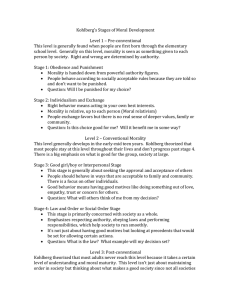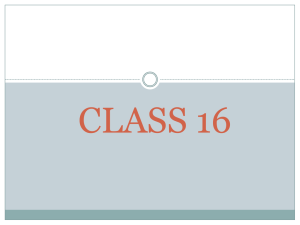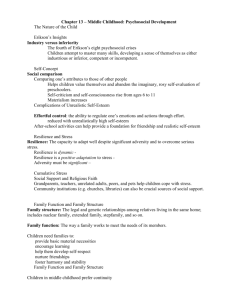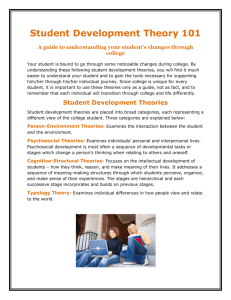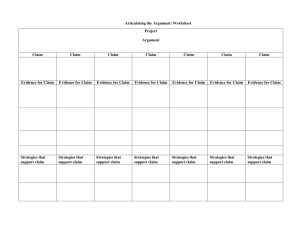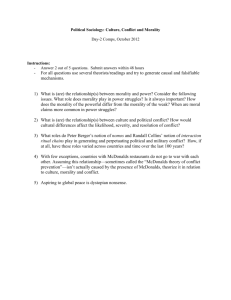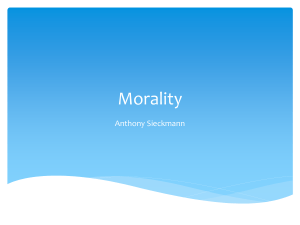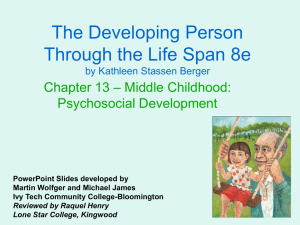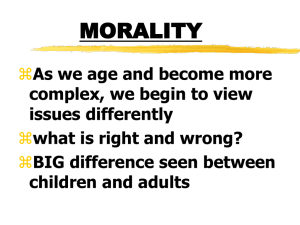College Student Development and the Stages of Critical Thinking
advertisement
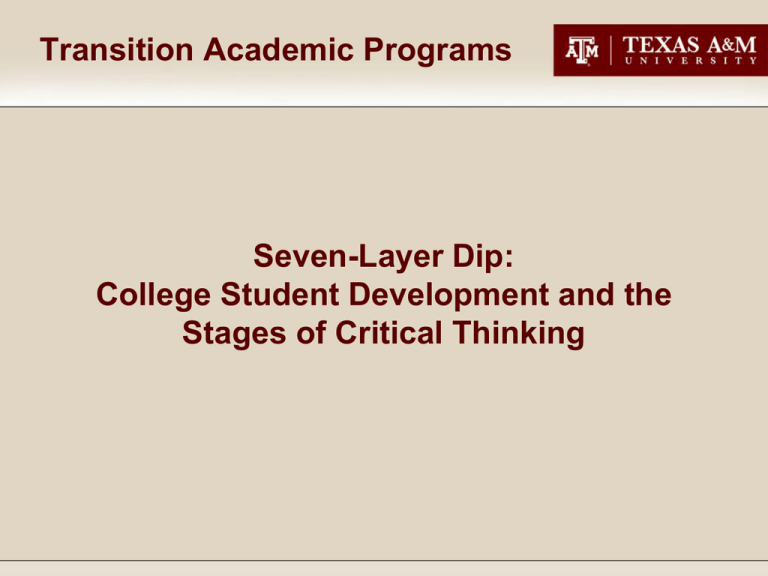
Transition Academic Programs Seven-Layer Dip: College Student Development and the Stages of Critical Thinking Transition Academic Programs Dr. Kriss Boyd, Executive Director Mr. Adrian Garza, Senior Adv. I Ms. Amy Connolly, Senior Adv. I Transition Academic Programs Developmental Processes Relevant to College Students: 1. 2. 3. 4. 5. 6. 7. Chickering’s Seven Vectors of Identity Development Super’s Theory – Five Stages of Career Development Holland’s Theory – Six Types of Work Environments Lorin Anderson’s revision of Bloom’s Taxonomy Kohlberg’s Theory – College Student Moral Development Seven Stages of Critical Thinking Steele’s Five That Help College Students Make Good Decisions Transition Academic Programs Chickering’s Seven Vectors of Identity Development: Developing competence Managing emotions Moving through autonomy toward interdependence Developing mature interpersonal relationships Establishing identity Developing purpose Developing integrity http://www.cabrini.edu/communications/ProfDev/cardevChickering.html Transition Academic Programs Super’s Theory – Five Stages of Career Development: Growth: Birth-14 Exploration: 15-24 Establishment: 25-44 Maintenance: 45-64 Decline: 65+ Transition Academic Programs Relevant Subsets of Exploratory Stage: Age Tasks 14-18 18-21 21-24 Plan a tentative vocational goal Firm the vocational goal Training and initial employment http://taracat.tripod.com/careertheory1.html Transition Academic Programs Holland’s Theory – Six Types of Work Environments: Realistic Investigative Artistic Social Enterprising Conventional http://www.careerkey.org/choose-a-career/hollands-theory-of-career-choice.html Transition Academic Programs Transition Academic Programs Lorin Anderson’s revision of Bloom’s Taxonomy of Knowledge: Remember Understand Apply Analyze Evaluate Create http://thesecondprinciple.com/teaching-essentials/beyond-bloom-cognitive-taxonomy-revised/ Transition Academic Programs Kohlberg’s Stages of Moral Development: Level 1: Preconventional Stage one: Heteronomous Morality - Children obey rules to avoid being punished Stage two: Individualistic, Instrumental Morality - A child follows rules that benefit the person, but begins to compromise for other’s needs Transition Academic Programs Kohlberg’s Stages of Moral Development: Level II: Conventional Stage Three: Interpersonally Normative Morality - Student models ‘good behavior’ of important people. Stage Four: Social System Morality - Behavior reflects duty to a society in which morals are established by the people. Transition Academic Programs Kohlberg’s Stages of Moral Development: Level III: Post-conventional or Principled Stage Five: Human Rights and Social Welfare Morality - Student promotes fundamental human rights and welfare for all. Stage Six: Morality of Universalizable, Reversible, and Prescriptive General Ethic Principles - There is equal consideration of others and self. http://studentdevelopmenttheory.wordpress.com/morality/ Transition Academic Programs Critical Thinking as Defined by the National Council for Excellence in Critical Thinking, 1987 Critical thinking is the intellectually disciplined process of actively and skillfully conceptualizing, applying, analyzing, synthesizing, and/or evaluating information gathered from, or generated by, observation, experience, reflection, reasoning, or communication, as a guide to belief and action. https://www.criticalthinking.org/pages/defining-critical-thinking/766 Transition Academic Programs Sheffield and Rubenfeld discussed the following stages of Critical Thinking: 1. Analyzing Separating or breaking a whole into parts to discover their nature, function and relationships 2. Applying Standards Judging according to established personal, profession or social rules or criteria Transition Academic Programs Stages of Critical Thinking: 3. Discriminating Recognizing differences and similarities among things or situations and distinguishing carefully as to category or rank 4. Information Seeking Searching for evidence, facts or knowledge by identifying relevant sources and gathering objective, subjective, historical and current data from those sources Transition Academic Programs Stages of Critical Thinking: 5. Logical Reasoning Drawing inferences or conclusions that are supported in or justified by evidence 6. Predicting Envisioning a plan and its consequences Transition Academic Programs Stages of Critical Thinking: 7. Transforming Knowledge Changing or converting the condition, nature, form, or function of concepts among contexts B.K. Scheffer and M.G. Rubenfeld, Critical Thinking: What Is It and How Do We Teach It?, Current Issues in Nursing, J.M. Grace, Rubl, H.K. (2001). Transition Academic Programs Five phases George Steele listed to help students make good decisions with suggestion actions that will encourage growth in critical thinking skills: 1. Open the interview - Ask about the student’s comfort - Acknowledge that change/growth takes work Transition Academic Programs Steele’s Five Phases: 2. Identify the problem - Ask what may be required to make desired progress - Discuss pros and cons of choices - Discuss the students’ strengths and weaknesses related to choices 3. Identify possible solutions - Encourage the student to do the research to identify the range of options - Ask the student to identify a timeline for completion Transition Academic Programs Steele’s Five Phases: 4. Take action - Encourage the student to identify incremental goals - Set a time/date for a follow-up appointment for the student to discuss progress 5. Summarize the transaction - Ask the student to repeat the plan for addressing #3 and 4 http://www.nacada.ksu.edu/Resources/Clearinghouse/View/Articles/Decision-Making.aspx
